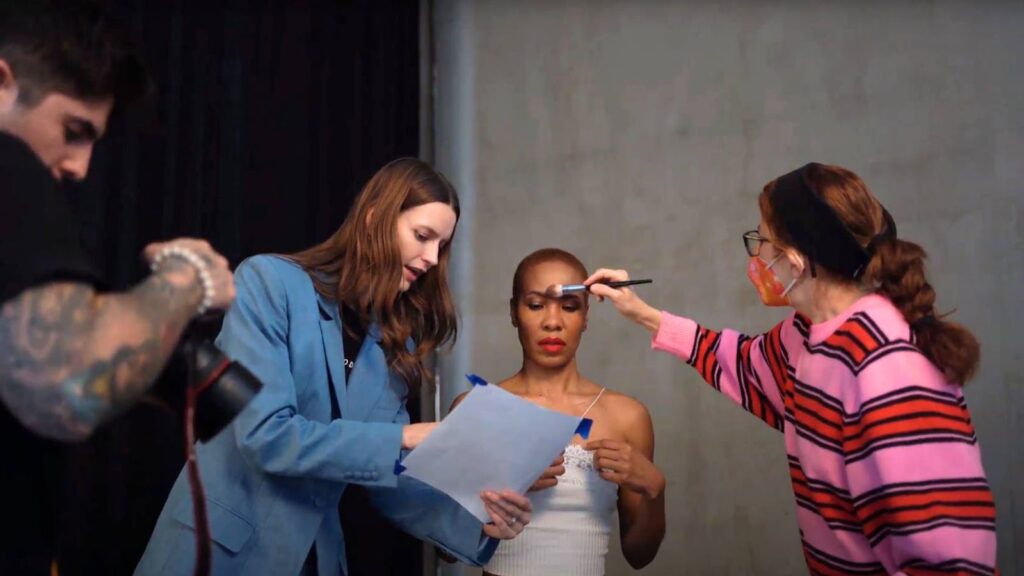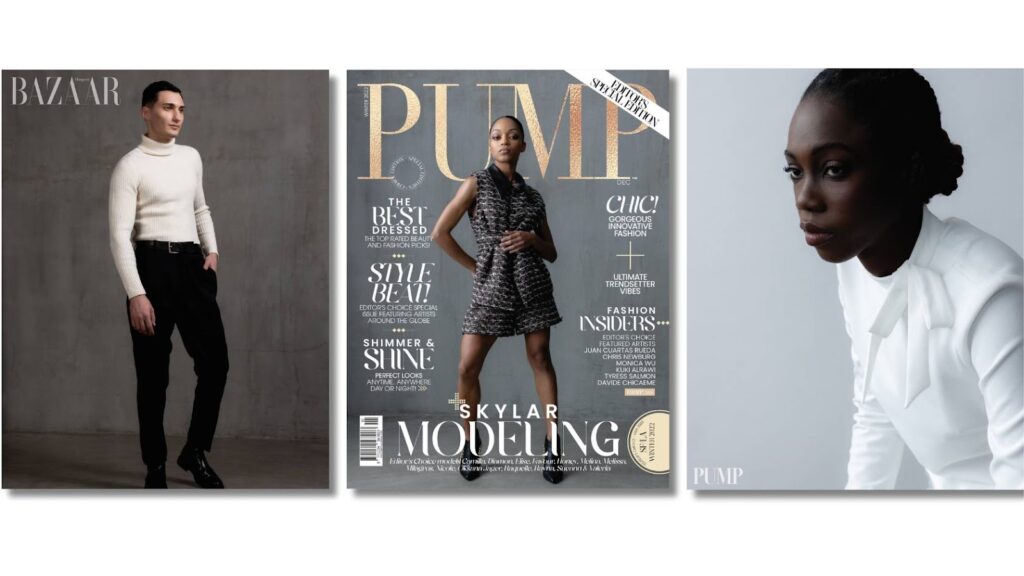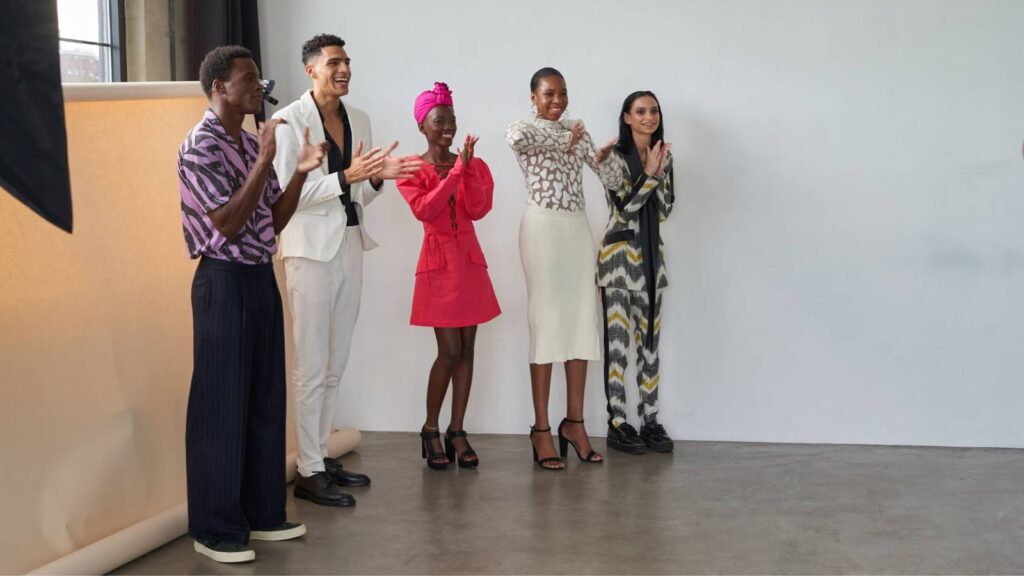A. Importance of modeling as a profession: The world of modeling is one that has captivated both individuals and industries for decades. Models are not only the faces that grace magazine covers and runways; they are the embodiment of beauty, style, and aspiration. The modeling profession has become a powerful force in shaping trends, promoting products, and inspiring millions around the globe. It offers a unique platform for self-expression, creativity, and personal growth. Understanding the importance of modeling as a profession is the first step towards embarking on a rewarding and fulfilling journey, and learning how to start modeling is key to pursuing this passion.
B. Overview of the modeling industry: The modeling industry is a dynamic and ever-evolving field that encompasses a wide range of opportunities and possibilities. From high fashion and runway modeling to commercial and plus-size modeling, there is a niche for everyone with a passion for the craft. Behind the glitz and glamour, the industry is driven by a network of agencies, photographers, designers, and stylists who work together to bring creative visions to life. However, breaking into this competitive industry can be a daunting task without the right knowledge and guidance. To learn how to get into modeling and navigate this industry successfully, it is crucial to understand the various pathways, requirements, and resources available to aspiring models.
C. Purpose of the guide: This comprehensive guide is designed to provide aspiring models with valuable insights, practical tips, and expert advice on how to navigate the modeling industry successfully. Whether you dream of strutting down the catwalks of Paris, gracing the covers of renowned fashion magazines, or becoming the face of international campaigns, this guide will equip you with the knowledge and tools necessary to kick-start your modeling career. From understanding the different types of modeling to building a standout portfolio, finding the right agency, nailing auditions, and managing your career, we have covered every aspect to help you achieve your modeling aspirations.
So, if you are ready to step into the world of fashion, beauty, and creativity, let’s dive into this comprehensive guide and unlock the secrets to becoming a successful model.
Understanding the Modeling Industry:
- Different types of modeling:
- Fashion modeling: Fashion modeling is perhaps the most well-known and glamorous branch of the industry. It involves showcasing clothing, accessories, and beauty products for high-end fashion designers, luxury brands, and fashion publications. Fashion models are typically tall, slender, and have unique features that can capture the essence of a designer’s vision.
- Commercial modeling: Commercial modeling focuses on promoting everyday products and services through various mediums like print ads, TV commercials, and online campaigns. Commercial models represent a diverse range of ages, body types, and ethnicities, as they need to connect with a broader audience.
- Plus-size modeling: Plus-size modeling celebrates body diversity and promotes inclusivity in the fashion industry. Plus-size models typically wear sizes above the industry standard, and they work in fashion, advertising, and editorial settings. This branch of modeling has gained significant traction in recent years, emphasizing the beauty and confidence of individuals of all sizes.
- Fitness and sports modeling: Fitness and sports modeling revolves around showcasing athletic apparel, equipment, and active lifestyle brands. These models have a toned and fit physique and often possess skills in specific sports or activities. They feature in fitness magazines, advertisements, and promotional materials.
- Runway and high fashion modeling: Runway and high fashion modeling is synonymous with the glitz and glamour of the fashion industry. Runway models showcase designer collections on the catwalk during fashion shows, while high fashion models are featured in prestigious editorial spreads, high-end campaigns, and luxury brand promotions. This type of modeling demands poise, confidence, and the ability to adapt to various designer aesthetics.
- Researching and Identifying Your Niche: It is essential to research and identify the modeling niche that aligns with your physical attributes, personality, and interests. Take the time to study the requirements and expectations of each type of modeling, including how to start modeling and how to get into modeling. Consider your body type, facial features, height, and unique qualities that can make you stand out in a specific modeling category. Identifying your niche will help you tailor your portfolio and focus your efforts on the opportunities that suit you best.
- The Role of Agencies and Independent Modeling: Modeling agencies play a crucial role in connecting aspiring models with industry professionals and job opportunities. They act as intermediaries, representing models and negotiating contracts on their behalf. Agencies have established networks, industry knowledge, and resources to help models launch and develop their careers, making them a valuable resource for those looking to start modeling.
On the other hand, independent modeling allows models to manage their own careers, directly seeking and securing opportunities without agency representation. Independent models often need to take on more responsibilities such as self-promotion, portfolio management, and contract negotiations. This approach provides more control but requires a thorough understanding of the industry and a proactive mindset. Understanding how to start modeling and how to get into modeling through agencies or independent paths can help aspiring models make informed decisions and pursue the right path for their career aspirations.

Building a Strong Foundation:
- Assessing and improving physical attributes:
- Maintaining a healthy lifestyle: Modeling requires models to be in good physical shape and maintain overall well-being. Focus on incorporating a balanced diet, regular exercise, and sufficient sleep into your daily routine. A healthy lifestyle helps you maintain a fit physique, glowing skin, and high energy levels, which are essential for a successful modeling career.
- Fitness and exercise routines: Regular exercise is crucial for models to stay in shape and maintain muscle tone. Incorporate a combination of cardiovascular exercises, strength training, and flexibility exercises into your fitness routine. Consider working with a professional trainer to create a customized workout plan that targets specific areas of your body based on the type of modeling you aspire to.
- Skincare and grooming tips: Flawless skin and impeccable grooming are essential for models. Establish a skincare routine that includes cleansing, exfoliating, moisturizing, and protecting your skin from the sun. Pay attention to your hair and nails as well, keeping them well-groomed and healthy. It’s also important to prioritize dental hygiene and maintain a bright smile.
- Developing a unique personal style:
- Understanding fashion trends: Stay updated with the latest fashion trends by following fashion magazines, blogs, and social media accounts of influential designers and stylists. Familiarize yourself with different styles, silhouettes, colors, and patterns that are popular in the industry. This knowledge will help you adapt and showcase versatility during photo shoots and auditions.
- Experimenting with different looks: Explore various fashion styles and experiment with different looks to discover what suits you best. Develop an understanding of how different clothing choices, hairstyles, and makeup can enhance your features and create different moods and aesthetics. Use this experimentation phase to develop your signature style.
- Enhancing your personal brand: Your personal brand is an important aspect of your modeling career. Consider the image you want to project to clients, agencies, and the audience. This includes your overall style, attitude, and the values you want to convey. Develop a unique and memorable personal brand that sets you apart from other models.
By focusing on assessing and improving your physical attributes, as well as developing a unique personal style, you lay a strong foundation for a successful modeling career. In the next sections, we will discuss the importance of creating an impressive modeling portfolio, learn how to start modeling, finding the right modeling agency, preparing for auditions to showcase your talent and skills, and understand how to get into modeling.

Creating an Impressive Modeling Portfolio:
- Importance of a modeling portfolio: A modeling portfolio is your visual resume and the key tool for showcasing your talent, versatility, and potential to clients, agencies, and casting directors. It is a collection of your best photographs that highlight your unique features, ability to embody different styles, and adaptability as a model. A well-curated portfolio is essential for making a lasting impression and securing modeling opportunities.
- Selecting the right photographer: Choosing the right photographer is crucial for capturing stunning and professional-quality images for your portfolio. Look for photographers with experience in fashion or modeling photography and review their portfolios to ensure their style aligns with your vision. Seek recommendations from industry professionals or other models to find a photographer who can bring out your best qualities and create captivating images.
Planning and executing a photo shoot:
- Choosing the right locations and themes: Select locations that complement the type of modeling you aim to pursue. For example, if you aspire to be a fashion model, urban settings or iconic landmarks might be suitable. If you’re interested in fitness modeling, a gym or outdoor sports venue could be appropriate. Discuss potential themes with your photographer to create a cohesive and visually appealing portfolio.
- Wardrobe selection and styling: Plan your wardrobe based on the modeling genres you want to target. Ensure you have a variety of outfits that showcase different styles, silhouettes, and colors. Coordinate with a stylist or fashion consultant, if possible, to create visually compelling looks that enhance your features and match the chosen themes.
- Posing and expression tips: Practice posing in front of a mirror to develop your confidence and body awareness. Experiment with different poses, angles, and facial expressions to find what works best for you. During the photo shoot, take directions from the photographer and be open to trying new poses and expressions. Remember to convey a range of emotions and showcase your ability to bring a concept or garment to life through your body language.
- Including a variety of shots: It’s important to include a variety of shots in your portfolio to demonstrate your versatility and range as a model. Include close-up shots to highlight your facial features, full-body shots to showcase your physique, and images that showcase different styles, moods, and expressions. Understand how to get into modeling and aim for a well-rounded portfolio that leaves a lasting impression.
- Digital portfolio and online presence: In today’s digital age, it’s crucial to have a digital portfolio and a strong online presence. Create a professional website or use online platforms specifically designed for models to showcase your portfolio. Utilize social media platforms like Instagram to share behind-the-scenes moments, recent work, and connect with industry professionals. Ensure that your digital portfolio and online presence are cohesive, visually appealing, and regularly updated.
By creating an impressive modeling portfolio, you present yourself as a professional and versatile model to potential clients and agencies. In the next sections, we will explore the process of finding the right modeling agency, preparing for auditions, and excelling in the competitive world of modeling.
Finding the Right Modeling Agency:
- Researching and identifying reputable agencies: Conduct thorough research to identify reputable modeling agencies that have a track record of representing successful models in your desired niche. Look for agencies with a good reputation, positive client feedback, and a roster of established models. Consider their expertise, industry connections, and the types of opportunities they offer. Beware of agencies that make unrealistic promises or ask for upfront fees.
- Preparing an impressive modeling resume: Create a well-crafted modeling resume that highlights your relevant experience, training, and skills. Include details such as your measurements, previous modeling gigs, any acting or performance experience, and notable achievements. Tailor your resume to showcase your strengths and align it with the requirements of the agencies you are interested in.
- Submitting your portfolio to agencies: Once you have identified the agencies you want to target, submit your portfolio and resume following their specific submission guidelines. Some agencies prefer digital submissions, while others may require physical copies. Pay attention to the agency’s preferred file formats and any specific requirements for photos and information. Double-check your portfolio to ensure it accurately represents your best work.
- Evaluating and comparing agency offers: If multiple agencies express interest in representing you, take the time to evaluate and compare their offers. Consider factors such as the agency’s reputation, industry connections, the types of clients they work with, and the support and guidance they provide to their models. Evaluate their commission structure, contract terms, and any additional fees. It’s essential to choose an agency that aligns with your career goals and values.
- Understanding contracts and negotiations: Before signing with an agency, thoroughly review and understand the terms of the contract. Seek legal advice if needed to ensure you are protected and aware of your rights and responsibilities. Pay attention to details such as contract duration, commission rates, exclusivity clauses, image usage rights, and termination conditions. Be prepared to negotiate certain terms if necessary, but approach negotiations professionally and with a clear understanding of your value as a model.
Knowing how to start modeling, finding the right modeling agency is a critical step towards establishing a successful modeling career. By researching reputable agencies, preparing an impressive modeling resume, submitting your portfolio strategically, evaluating offers carefully, and understanding contracts and negotiations, you can make an informed decision and secure representation that will support your growth and open doors to exciting modeling opportunities. In the following sections you will learn how to get into modeling, we will delve into the art of nailing modeling auditions and developing professional etiquette and networking skills.

Nailing the Modeling Audition:
- Preparing for auditions:
- Building confidence and overcoming nerves: Auditions can be nerve-wracking, but building confidence is key to performing your best. Practice positive affirmations, visualization techniques, and deep breathing exercises to calm your nerves. Rehearse your walk and poses to feel more comfortable and confident during the audition.
- Perfecting your runway walk: The runway walk is a crucial aspect of modeling auditions. Practice walking with poise, maintaining a straight posture, and keeping your head up. Strive for a smooth, confident, and natural stride. Pay attention to your arm and hand movements, ensuring they are fluid and complement your walk.
- Developing posing skills: Work on developing a repertoire of poses that highlight your best features and capture the essence of the brand or concept you’re auditioning for. Practice posing in front of a mirror, experimenting with different angles, expressions, and body language. Aim for a range of poses that showcase versatility and adaptability.
- Dressing appropriately for auditions: Dress in a way that showcases your personal style while keeping it simple and professional. Opt for form-fitting clothing that allows the casting directors to see your body proportions clearly. Wear minimal makeup to highlight your natural beauty, and keep your hair clean and styled in a way that doesn’t distract from your face.
- Showcasing versatility and adaptability: During auditions, casting directors may ask you to demonstrate different styles, personalities, or emotions. Be prepared to showcase your versatility by adapting your walk, poses, and expressions to meet their requirements. Be open to trying new things and taking direction, as this will demonstrate your ability to collaborate and bring their vision to life.
- Handling feedback and rejection positively: Not every audition will result in success, and it’s essential to handle feedback and rejection positively. Use feedback as an opportunity for growth and improvement. Take note of constructive criticism and apply it to your future auditions. Remember that rejection is part of the industry, and it doesn’t define your worth as a model. Stay resilient, maintain a positive mindset, and use rejection as fuel to work harder towards your goals.
By preparing for auditions, dressing appropriately, showcasing versatility, and maintaining a positive mindset, you increase your chances of making a lasting impression on casting directors and that’s really how to start modeling. Remember that auditions are not only about booking a specific job but also about building relationships and making connections within the industry. In the next section, we will discuss how to get into modeling, the importance of developing professional etiquette and networking skills to foster a successful modeling career.
Professional Etiquette and Networking:
- Importance of professionalism in the modeling industry: Professionalism is a crucial aspect of succeeding in the modeling industry. It encompasses traits such as reliability, punctuality, a positive attitude, and the ability to work well with others. Maintaining professionalism demonstrates your commitment to your craft, earns the respect of industry professionals, and increases your chances of securing repeat bookings and referrals.
- Networking strategies for aspiring models: Networking plays a vital role in expanding your connections and opportunities within the modeling industry. Here are some effective networking strategies:
- Attend industry events: Attend fashion shows, modeling conventions, trade shows, and other events where you can meet industry professionals, including designers, photographers, stylists, and casting directors.
- Join modeling associations and communities: Become a member of modeling associations or online communities where you can connect with fellow models and industry experts. Participate in forums, discussions, and networking events to build relationships and gain insights.
- Collaborate with other creatives: Collaborate with photographers, makeup artists, hairstylists, and designers on creative projects. These collaborations not only allow you to build your portfolio but also provide opportunities to connect with other professionals and expand your network.
- Building relationships with industry professionals: Building genuine relationships with industry professionals can lead to valuable opportunities and mentorship. Here’s how you can foster these relationships:
- Be respectful and courteous: Treat everyone you encounter in the industry with respect, from assistants to top-tier professionals. Show gratitude for opportunities and express appreciation for their time and expertise.
- Follow up after meetings or collaborations: Send thank-you notes or emails to express your appreciation and maintain a connection with industry professionals you have worked with or met. Stay in touch periodically to keep the relationship alive.
- Seek mentorship: Want to know how to start modeling? Look for experienced models or industry professionals who are willing to mentor and guide you. Their insights and advice can be invaluable in navigating the industry and advancing your career.
- Leveraging social media platforms: Social media has become a powerful tool for models to showcase their work, connect with industry professionals, and build a personal brand. Here are some tips for leveraging social media platforms effectively:
- Maintain a professional online presence: Curate your social media profiles to reflect your brand and professionalism. Share your portfolio, behind-the-scenes glimpses, and industry-related content. Engage with followers, respond to comments, and participate in relevant conversations.
- Follow and engage with industry professionals: Follow photographers, designers, stylists, and other industry professionals on social media. Engage with their content by liking, commenting, and sharing. This demonstrates your interest and can lead to potential collaborations or opportunities.
- Use hashtags strategically: Utilize industry-specific hashtags to increase your visibility within the modeling community. Research popular hashtags and incorporate them into your posts to expand your reach and attract the attention of industry professionals.
By maintaining professionalism, actively networking, building relationships, and leveraging social media platforms, you can establish a strong presence in the industry and increase your chances of securing modeling opportunities. In the final section, we will provide valuable tips for how to get into modeling, managing and advancing your modeling career effectively.

Managing Your Modeling Career:
- Understanding contracts and legal considerations: As a model, it is crucial to have a solid understanding of contracts and legal considerations. Familiarize yourself with contract terms, including exclusivity clauses, payment terms, usage rights, and any potential conflicts of interest. Seek legal advice if needed to ensure you are protected and aware of your rights and responsibilities. Remember to carefully read and negotiate contract terms before signing any agreements.
- Working with photographers, designers, and stylists: Collaborating effectively with photographers, designers, and stylists is essential for producing high-quality work. Maintain open communication, follow their instructions, and be receptive to their creative vision. If you want to know on how to start modeling, developing professional relationships by delivering exceptional performance, being punctual, and demonstrating a positive attitude is crucial. Professional conduct and a strong work ethic will enhance your reputation and lead to future opportunities.
- Navigating castings, fittings, and fashion shows: Castings, fittings, and fashion shows are integral parts of a model’s career. Prepare for castings by researching the brand or project and arriving well-groomed and dressed appropriately. During fittings, communicate openly with designers to ensure the perfect fit. When participating in fashion shows, be punctual, patient, and adaptable. Follow instructions from show directors and maintain a professional demeanor backstage.
- Balancing freelance and agency work: Balancing freelance and agency work requires careful consideration. Freelance work allows you to have more control over your career, but it may also require more self-promotion and management. Agency representation can provide access to a wider network of clients and opportunities, but it typically comes with contractual obligations. Evaluate your goals, consider the benefits and limitations of each, and make informed decisions that align with your career aspirations.
- Diversifying your modeling career: To thrive in the competitive modeling industry, it’s essential to diversify your career and explore various avenues. Consider expanding your repertoire by venturing into different modeling genres, such as print, runway, commercial, or fitness. Seek opportunities in different markets, both locally and internationally, to broaden your reach. Additionally, explore opportunities in related fields, such as acting or hosting, to expand your skill set and increase your marketability.
By understanding contracts and legal considerations, working effectively with industry professionals, navigating casting and fashion show processes, balancing freelance and agency work, and diversifying your modeling career, you can effectively manage and advance your career in the ever-evolving modeling industry. Remember to stay adaptable, continuously improve your skills, and maintain a professional and positive attitude to maximize your chances of long-term success and your road to how to start modeling.
Staying Healthy and Taking Care of Yourself:
- Mental and emotional well-being: Modeling can be a demanding industry, and it’s important to prioritize your mental and emotional well-being. Take time for self-care activities that help you relax and recharge, such as meditation, yoga, or spending time in nature. Surround yourself with a supportive network of friends and family who understand the challenges you may face and can provide encouragement and emotional support.
- Recognizing and dealing with industry pressures: The modeling industry often comes with certain pressures, including body image expectations, intense competition, and constant scrutiny. It’s crucial to recognize these pressures and develop healthy coping mechanisms. Focus on maintaining a positive body image by embracing your unique qualities and practicing self-acceptance. Set realistic goals for yourself and avoid comparing yourself to others. Remember that true beauty comes in all shapes, sizes, and forms.
- Coping with rejection and maintaining a positive mindset: Rejection is a common aspect of the modeling industry, and it’s important to develop resilience and a positive mindset to navigate through it. Instead of dwelling on rejections, view them as opportunities for growth and learning. Focus on your strengths and achievements, and remember that each rejection brings you one step closer to finding the right opportunities. Surround yourself with positive influences and affirmations to help maintain a resilient mindset.
- Balancing work and personal life: Finding a balance between work and personal life is essential for your overall well-being. Prioritize self-care activities and make time for hobbies, relaxation, and quality time with loved ones. Set boundaries to ensure you have time for yourself and your personal relationships. Remember that taking care of yourself outside of work will enhance your performance and longevity in the industry.
Taking care of your mental, emotional, and physical well-being is crucial for sustaining a successful and fulfilling modeling career. Prioritize self-care, develop healthy coping mechanisms, maintain a positive mindset, and find a healthy work-life balance. By prioritizing your well-being, you’ll be better equipped to navigate the challenges of the industry and enjoy a long and rewarding modeling career.

Conclusion:
- Recap of key points: Throughout this comprehensive guide, we have covered essential aspects of getting into modeling and building a successful career. We started by understanding the modeling industry, explored how to build a strong foundation, discussed creating an impressive modeling portfolio, finding the right modeling agency, nailing the modeling audition, managing your modeling career, and staying healthy and taking care of yourself. Each section provided valuable insights and practical tips to help aspiring models navigate the industry with confidence.
- Encouragement and motivation for aspiring models: Pursuing a career in modeling requires dedication, perseverance, and resilience. Remember that success rarely comes overnight and that it’s essential to stay committed to your goals. If you want to know how to start modeling, embrace your unique qualities and strengths, as they are what set you apart in the industry. Surround yourself with a support system that believes in your potential and offers encouragement during both the highs and lows of your journey. Believe in yourself, stay focused, and never give up on your dreams.
- Final tips for success in the modeling industry: As you embark on your modeling journey, here are some final tips to keep in mind:
- Continuously improve your skills: Invest in your craft by attending workshops, classes, and seeking feedback from industry professionals. Keep honing your posing, walking, and expression skills to stay competitive and versatile.
- Stay informed and adapt: The modeling industry is ever-changing, with new trends and demands emerging. Stay informed about industry developments, fashion trends, and changes in casting preferences. Adaptability and flexibility will be your allies.
- Be professional and reliable: Maintain professionalism in all your interactions, whether it’s with clients, agencies, or fellow professionals. Punctuality, reliability, and a positive attitude will help you build a strong reputation and foster lasting relationships.
- Embrace diversity and inclusivity: Celebrate and appreciate the beauty of diversity. Embrace opportunities to work with brands that prioritize inclusivity and represent a wide range of identities, sizes, and backgrounds.
- Never stop learning: The modeling industry is a continuous learning process. Seek inspiration from fashion magazines, runway shows, and influential figures in the industry. Stay curious, adaptable, and open to growth.
Remember, to understand how to get into modeling and the path to a successful modeling career may have twists and turns, but with passion, perseverance, and a strong foundation, you can achieve your goals. Believe in yourself, embrace the journey, and enjoy the exhilarating ride of pursuing your dreams in the world of modeling.
Best of luck on your modeling journey!

